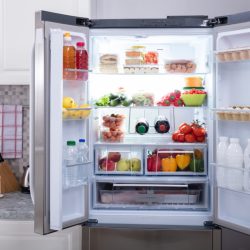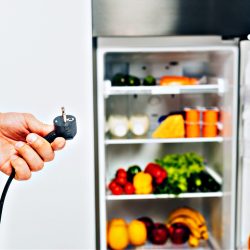Over time, components on an appliance tend to tear or degrade. On a refrigerator, the gasket might be one of the first parts that need replacement. Of course, you can attempt to do this fix yourself. However, you'd need to learn how to do so first. If you're wondering if you can glue a refrigerator gasket, we have the answer!
Yes, it's possible to glue the gasket onto the refrigerator. However, you can't use any kind of glue. Some gaskets will come with adhesives of their own. If that isn't the case, you can use superglue, Gorilla Glue, or E6000 glue.
When trying to fix a component, it's typically better to follow the manufacturer's guidance/process. However, sometimes you can work around having to use an adhesive. Regardless, if you plan to use an adhesive, you'll need to follow instructions carefully. We'll talk about these concerns and more further ahead. Without further ado, let's get into it!
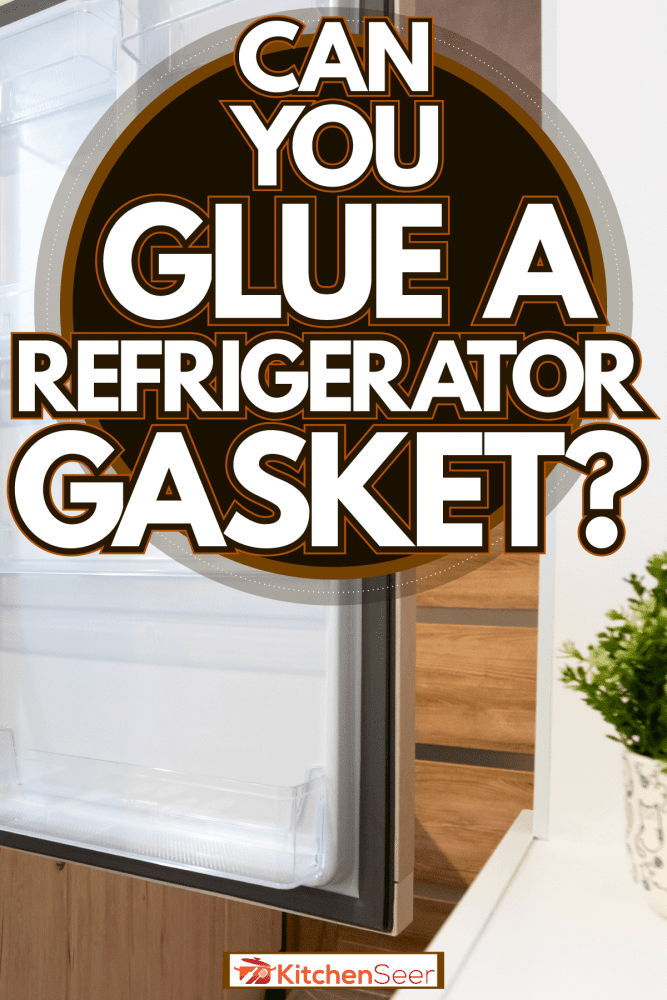
Replacing An Old Fridge Gasket With A New One
Before you think about installing a new gasket, you'll need to inspect how the current one is installed. Refrigerators vary regarding how components are assembled. Some will use an adhesive to hold the rubber gasket.
Others will take a different approach. Manufacturers sometimes mount the gasket without using an adhesive. Regardless, start by inspecting the installation.
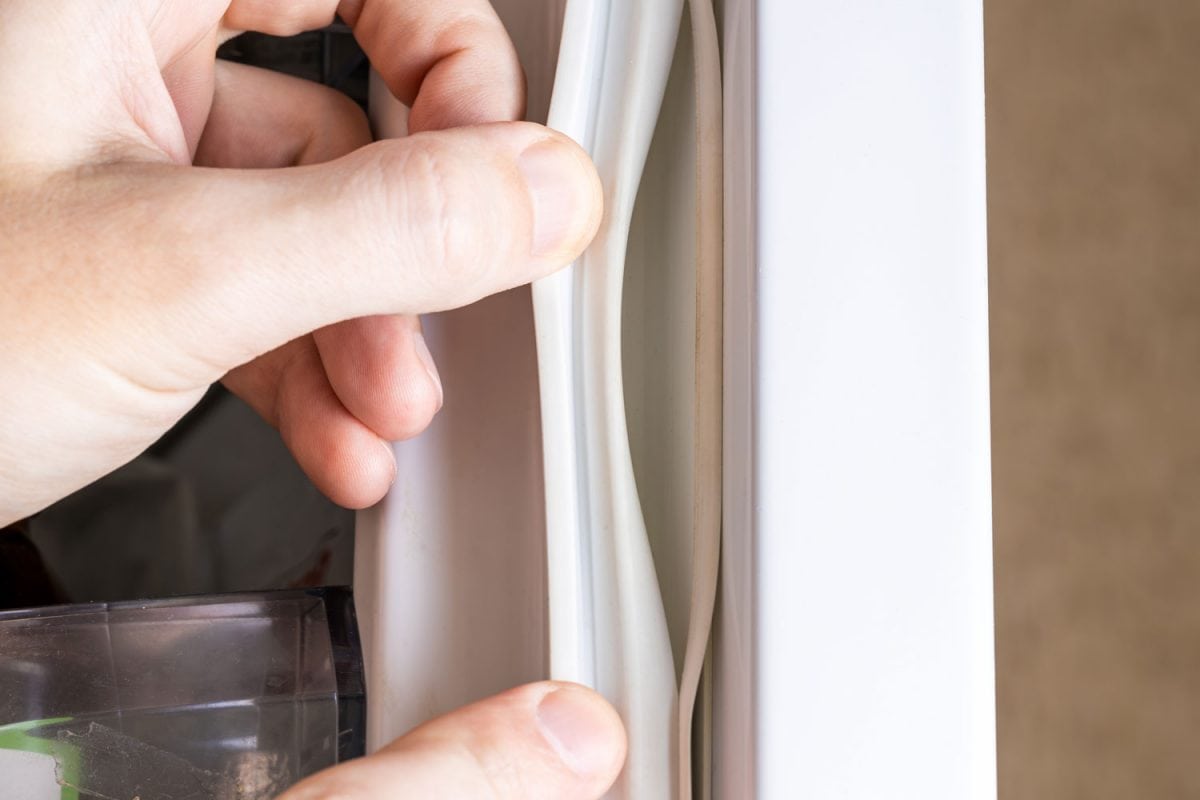
You can start by pulling the gasket back from behind. If you see no screws or channels to keep the seal in place, then it's glued in behind the door liner.
In other words, if you try to pull the gasket from the lining of the door, it will only rise a bit. Regardless, now it's time to get the exact gasket you need for your fridge. You can do that by locating the model number of the refrigerator.
To locate the model number, search the inside wall, inside of the door, or door frame of the refrigerator.
Removing The Old Gasket
Once you have the replacement gasket, you'll need a putty knife. Get it behind the door liner and slowly move it down. Doing this will break down the adhesive that's holding the current gasket in place.
Work your way around the entire fridge door. Once you've run the putty knife all around the edges, pull the seal up. You might have to use a bit of force to remove it.
It should snap off relatively easily. Take your time to pull it off the door entirely.
Gluing The New Gasket
This part of the process will depend on the gasket you purchase. Some replacement gaskets might come with an adhesive. If they do, you'll have to follow the instructions carefully.
In a situation where the gasket doesn't come with an adhesive, you can use a silicone sealant, Gorilla Glue, superglue, or E6000 glue. The only problem you might have with using these adhesives is that they might not last that long.
Before applying the adhesive, clean the area thoroughly to remove any grime built up over time. This step also ensures there's no food source for hidden mold growth. Once the edges are clean, you can apply the glue of your choice.
As a precaution, you'll want to use the glue sparingly. Though it might not be a big deal to some, using too much adhesive can result in a mess. Even if your priority is to get the fridge back in working order, be careful when applying the glue.
Here's an example of applying too much sealant:
As you can see, it can be an eyesore to those who want to keep it clean.
Letting The Adhesive Settle
Regardless, once you apply the adhesive, there's still a bit more to do. Depending on how much adhesive you have used, wipe the excess off if there is any. Keep the refrigerator door closed for 12 hours or as instructed by the manufacturer.
This will give the adhesive enough time to cure. This way, it can hold the refrigerator gasket in place.
How To Install A Gasket Without Glue
Now that we've gone over installing a gasket with glue, you can also install one without it. After looking at the video example above, the result might not look appealing to some. So, to avoid having visible excess sealant, let's go over the alternative.
To start the process, you'll need to remove the old gasket. In that regard, the steps won't change. Clean the area with vinegar to make sure you remove any grime.
Once it's clean, grab the gasket and take a close look at it. Make sure it is straight. If there's any bending, let it sit in a warm area for a day or so.
After it straightens, take the lip of the gasket and hook it into the door liner. To make the process easier, start installing it by the corners and work your way down.
If the door liner is too thin, you can use a flathead screwdriver to pry the door liner forward enough to hook the gasket. Tuck the lip in as you work your way down. Here's a YouTube video demonstrating how to do this:
How Do You Repair A Tear In A Refrigerator Gasket?
As you search for a replacement gasket, you might find that the price doesn't justify replacing the gasket altogether. The cost can range from $50 to $200. It will cost more if you own an older model.
Thus, it might make more sense to search for a fix. This is especially the case if there's a small tear that looks easily fixable. Luckily enough, some repairing methods will remove the need for a new gasket.
This way, you can extend the lifespan of the seal for a bit longer. However, it's essential to keep in mind that this only applies to small sections. If the seal has degraded too much, you'll need a replacement.
Repairing The Tear
You will need silicone sealant in areas where the gasket won't grip the refrigerator door. There's a YouTube video above that you can follow for this fix. However, if the result is too messy for you, you can use a more delicate method.
You will need to use a cotton swab. Before gluing the opening, clean the area to remove any grime. Then, put some silicone sealant on the cotton swab.
Push the cotton swab into the area where the rubber is loose. This way, you can apply enough silicone to hold the gasket while avoiding excess sealant.
Finally, close the refrigerator door. Avoid opening it for at least 8 hours or so. This should be enough time to let the sealant set.
How Do You Install A Refrigerator Door Gasket?
The process to install a new refrigerator door gasket will vary. Not all fridges are the same. Manufacturers will typically have their own way of installing the gasket.
Some will use screws to hold it in place. Others use styrofoam glue. Lastly, some refrigerators might not use any adhesive or screws at all! They will usually have a gasket that hooks into the door liner.
So, depending on the type of refrigerator you have, you will have to remove screws, adhesive, or pull the gasket off. From there, you can decide on the installation method.
You can use the lip of the gasket to hook onto the door liner. If you want to secure it, use an adhesive. In most cases, the gasket itself should do well.
If your fridge has screws, you will need to retighten them once you put the new gasket in place. Here's an example of replacing a gasket on a refrigerator that secures it with screws:
What Is The Best Glue For Refrigerator Plastic?
As refrigerators age, many parts will begin to degrade. Sometimes the refrigerator liner might break apart. If you want to fix it, you can't use any random glue.
It needs to be able to withstand the conditions inside the fridge. Some of the best glues to use for refrigerator repairs include:
- Cyanoacrylate Super Glue
- Sugru Moldable Glue
- Food-safe silicone sealant
In general, the best glue to use on the refrigerator will depend on the area you need to fix. You will need cold-resistant glue to ensure it won't budge after application for issues inside. It will also have to be food safe if it's coming in contact with food.
Impact resistance will be more important for refrigerator handles or plastic parts on the exterior. Regardless, the glues professionals use for refrigerator repair will be thicker in texture. This way, the glue can stay in place as it cures.
Read more: What Is The Best Glue For Refrigerator Plastic?
In Closing
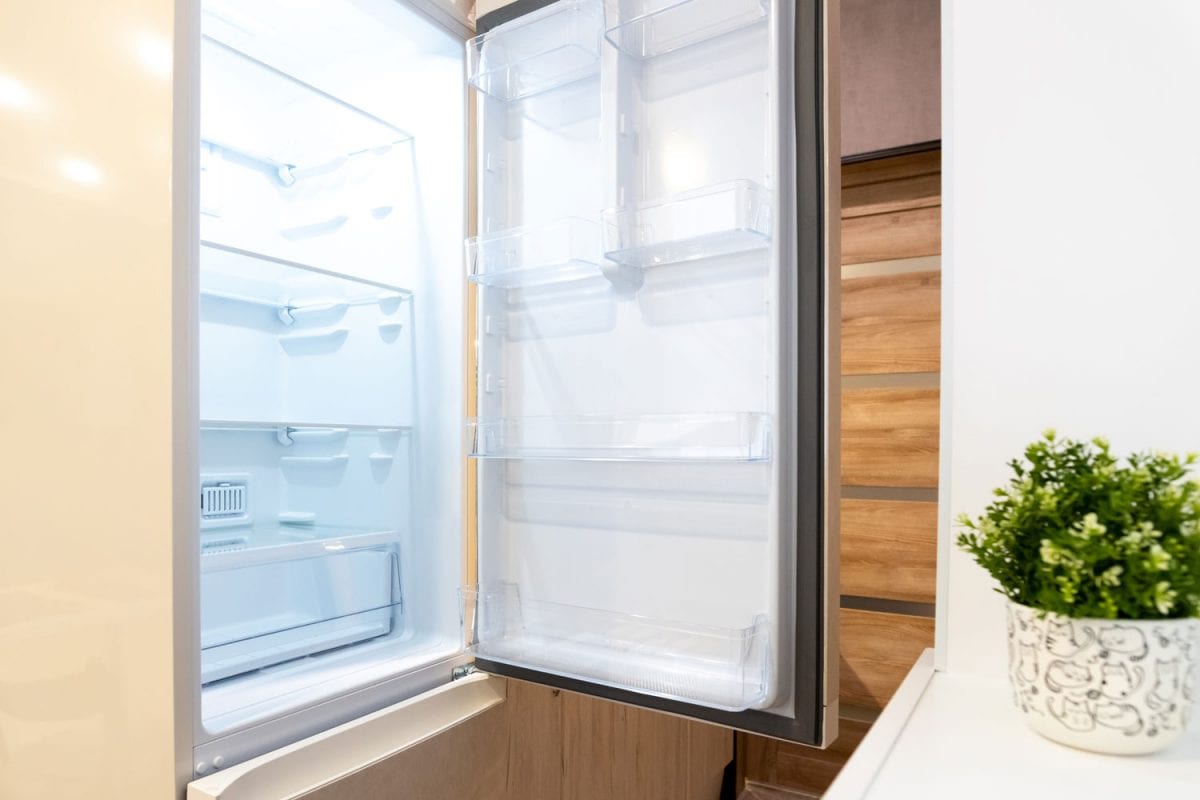
Refrigerator repairs are simple but require a bit of research. Fixing the problem yourself can save you the cost of hiring a professional. It can get pricey getting someone to do the fix for you. Hopefully, you found the information above helpful!
Before you go, do you have other refrigerator concerns? Is it running all the time? To find out if that's normal, check out our post:
Should A Refrigerator Run All The Time?
Are you curious to learn why the refrigerator vibrates? It could be cause for concern! To find out more, check out our post:
Why Does My Refrigerator Vibrate?


